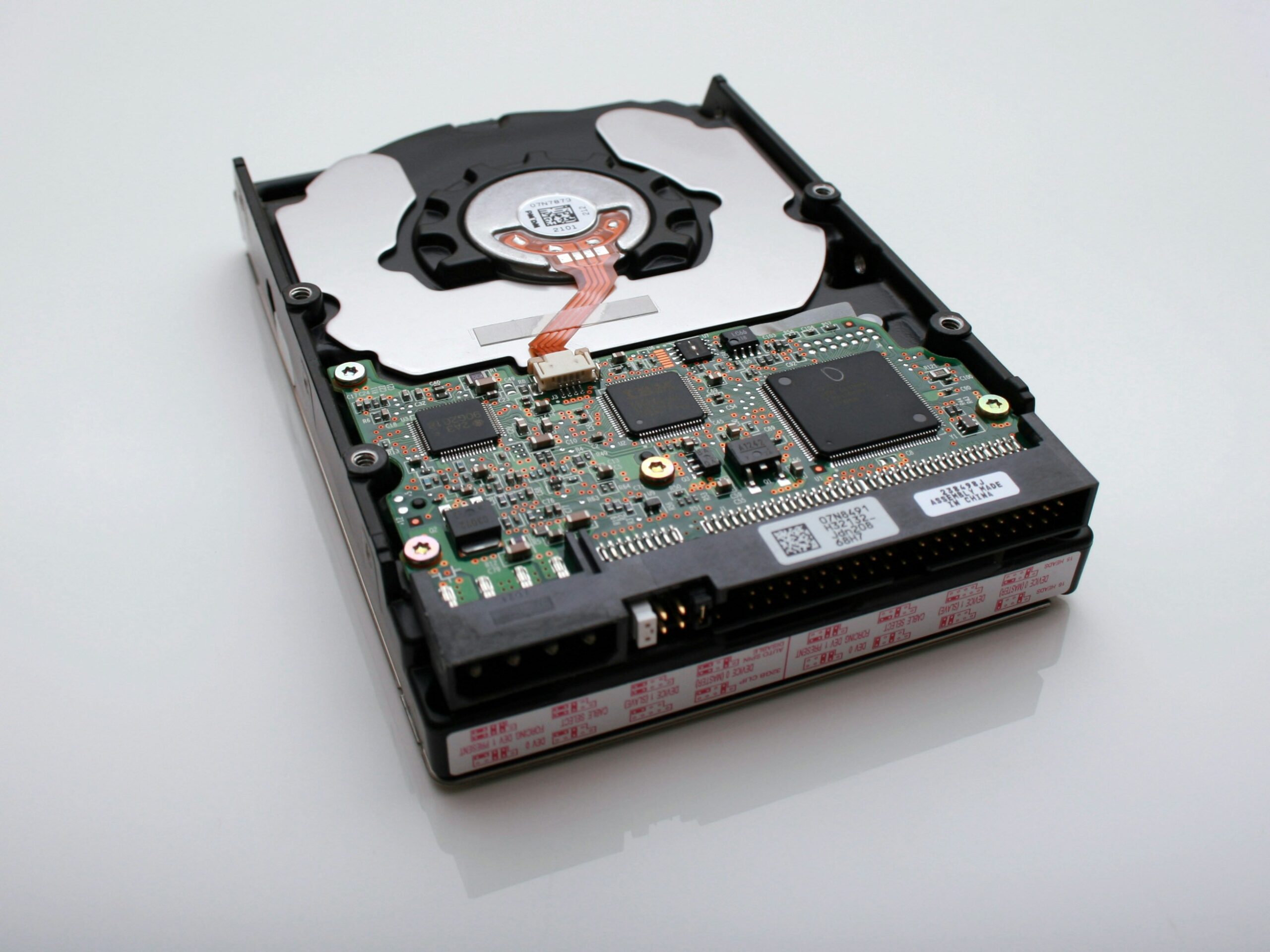Defragmenting a hard drive is a critical maintenance task that enhances your computer’s performance by reorganizing fragmented data. This detailed guide will walk you through the defragmentation process on Windows, explain why it’s essential for traditional hard disk drives (HDDs), and provide tips for effective defragmentation. It will also cover additional steps for optimizing your computer’s performance.
Helpful Picks
- Sleek profile design with a matte, smudge-resistance finish
- Plug & Play - Easy to use with no software to install
- Quickly add more storage capacity to your PC and other compatible devices
- USB 3.0 and USB 2.0 compatible with no external AC power cord needed
- Pre-formatted NTFS for Windows PC (reformatting required for Mac computers)
- Easily store and access 5TB of content on the go with the Seagate portable drive, a USB external hard Drive
- Designed to work with Windows or Mac computers, this external hard drive makes backup a snap just drag and drop
- To get set up, connect the portable hard drive to a computer for automatic recognition software required
- This USB drive provides plug and play simplicity with the included 18 inch USB 3.0 cable
- High capacity in a small enclosure – The small, lightweight design offers up to 6TB* capacity, making WD Elements portable hard drives the ideal companion for consumers on the go.
- Plug-and-play expandability
- Vast capacities up to 6TB[1] to store your photos, videos, music, important documents and more
- SuperSpeed USB 3.2 Gen 1 (5Gbps)
What is Defragmentation?
Defragmentation is the process of consolidating fragmented data on a hard drive. When you save a file, it is often stored in separate blocks scattered across the disk. Over time, as files are created, modified, and deleted, fragmentation occurs, causing the drive to work harder and slower to read these scattered pieces. Defragmentation reorganizes the data, placing fragmented files into contiguous blocks, thus improving access speed and overall system performance.
Why Defragmentation is Important
Improved Performance
Fragmentation causes the read/write heads of a hard drive to move around more than necessary, slowing down file access times. Defragmentation minimizes these movements, allowing for faster data retrieval and improved overall system performance.
Enhanced System Stability
By defragmenting your hard drive, you reduce the likelihood of system crashes and other stability issues caused by heavily fragmented files.
Increased Lifespan of the Hard Drive
Reducing the physical strain on the hard drive through defragmentation can extend its lifespan. When the drive works more efficiently, it undergoes less wear and tear.
When Not to Defragment
It’s important to note that defragmentation is not suitable for solid-state drives (SSDs). SSDs do not suffer from the same fragmentation issues as HDDs because they use flash memory to store data. Defragmenting an SSD can decrease its lifespan because the process involves unnecessary write operations. Instead, SSDs use a process called TRIM to manage data more efficiently.
Steps to Defragment a Hard Drive on Windows
Using the Built-in Windows Tool
1. Open the Disk Defragmenter Utility
- Press the
Windowskey and typedefragmentordefrag. - Select
Defragment and Optimize Drivesfrom the search results.
This built-in utility is straightforward and effective for basic defragmentation tasks.
2. Select the Drive to Defragment
- In the Disk Defragmenter window, you will see a list of drives. Select the drive you want to defragment. Typically, this will be the
C:drive.
3. Analyze the Drive
- Click
Analyzeto see if the drive needs to be defragmented. This will provide a percentage of how fragmented the drive is.
Analyzing the drive helps determine whether defragmentation is necessary. Drives that show significant fragmentation benefit the most from this process.
4. Defragment the Drive
- If the drive needs defragmentation, click
Optimize. The process might take some time, depending on the size and fragmentation level of the drive.
During optimization, the tool rearranges the data into a more efficient layout, reducing the time required for the drive to access files.
5. Schedule Regular Defragmentation
- You can set up a schedule for regular defragmentation by clicking on
Change settingsand setting a frequency (Daily, Weekly, Monthly).
Regular defragmentation ensures that your drive remains in optimal condition, maintaining performance over time.
Using Third-Party Tools
Third-party tools often offer more advanced features and can provide deeper insights into the defragmentation process.
Defraggler
- Download and Install Defraggler: Visit the official Defraggler website to download and install the software.
- Open Defraggler: Launch the program and select the drive you want to defragment.
- Analyze the Drive: Click
Analyzeto see the fragmentation status. - Defragment the Drive: Click
Defragto start the defragmentation process.
Defraggler provides a detailed map of the drive, showing the location of fragmented files, and offers both quick and full defragmentation options.
Auslogics Disk Defrag
- Download and Install Auslogics Disk Defrag: Visit the official Auslogics Disk Defrag website to download and install the software.
- Open Auslogics Disk Defrag: Launch the program, select the drive, and click
Defrag. - Schedule Defragmentation: Use the scheduling options to set up automatic defragmentation.
Auslogics Disk Defrag offers additional features such as optimizing file placement and integrating with Windows Explorer for easy access.
Tips for Effective Defragmentation
Close Applications
Close all running applications and background processes to speed up the defragmentation process. Active programs can interfere with the defragmentation, causing it to take longer.
Backup Data
It’s a good practice to back up your important data before defragmenting the hard drive. While defragmentation is generally safe, having a backup ensures that you don’t lose important files if something goes wrong.
Regular Maintenance
Schedule regular defragmentation to keep your hard drive running efficiently. Regular maintenance prevents excessive fragmentation and keeps your system performing optimally.
Additional Steps for Optimizing Your Computer’s Performance
Clean Up Your Disk
Use the built-in Disk Cleanup tool to remove temporary files, system cache, and other unnecessary data that can slow down your computer.
- Open Disk Cleanup: Press the
Windowskey, typeDisk Cleanup, and select the tool from the search results. - Select the Drive: Choose the drive you want to clean up (usually
C:). - Clean Up System Files: Click
Clean up system filesto remove more extensive files, such as old Windows updates.
Uninstall Unnecessary Programs
Remove programs that you no longer use to free up space and reduce the load on your system.
- Open Control Panel: Press the
Windowskey, typeControl Panel, and select it from the search results. - Uninstall a Program: Click
Uninstall a programunder the Programs section, and remove any unnecessary applications.
Update Your Software
Ensure that your operating system, drivers, and applications are up-to-date. Updates often include performance improvements and bug fixes.
- Windows Update: Go to Settings > Update & Security > Windows Update, and check for updates.
- Driver Updates: Use Device Manager to check for driver updates or visit the manufacturer’s website for the latest drivers.
Optimize Startup Programs
Limit the number of programs that start automatically when your computer boots up to improve startup times and overall performance.
- Open Task Manager: Press
Ctrl + Shift + Escto open Task Manager. - Startup Tab: Navigate to the Startup tab, and disable unnecessary programs.
Increase RAM
Adding more RAM can significantly improve your computer’s performance, especially if you frequently run memory-intensive applications.
Upgrade to an SSD
If you’re using an HDD, consider upgrading to an SSD for faster data access and improved overall performance. SSDs provide significant speed advantages over traditional HDDs.
Monitor Your System
Use system monitoring tools to keep an eye on your computer’s performance and identify any potential issues.
- Resource Monitor: Press
Windows + R, typeresmon, and press Enter to open Resource Monitor. - Performance Monitor: Press
Windows + R, typeperfmon, and press Enter to open Performance Monitor.
What is defragmentation?
Defragmentation is the process of reorganizing fragmented data on a hard drive to make data access more efficient. It consolidates fragmented files and free space, allowing the drive to operate more efficiently by reducing the time it takes to locate and retrieve data.
Why should I defragment my hard drive?
Defragmenting a hard drive improves its performance by reducing the time it takes to access files. It can enhance overall system speed, improve stability, and extend the lifespan of the hard drive by minimizing the physical movement of the read/write heads.
How often should I defragment my hard drive?
For traditional hard drives (HDDs), it’s recommended to defragment once a month. However, if you use your computer heavily or notice a slowdown in performance, you may need to defragment more frequently. SSDs do not need defragmentation.
Can defragmentation harm my hard drive?
Defragmentation is generally safe for HDDs and can improve their performance. However, it is not necessary for SSDs and can reduce their lifespan by causing unnecessary write cycles.
How do I know if my hard drive needs defragmentation?
You can check the fragmentation level using the built-in Windows Defragment and Optimize Drives tool. It analyzes the drive and provides a fragmentation percentage, indicating whether defragmentation is needed.
Can I use my computer while defragmenting the hard drive?
Yes, you can use your computer during defragmentation, but it might slow down the process and impact performance. For best results, it’s recommended to defragment when the computer is not in heavy use.
Is defragmentation necessary for SSDs?
No, defragmentation is not necessary for SSDs and can actually harm them. SSDs use a process called TRIM to manage data more efficiently and maintain performance.
How long does it take to defragment a hard drive?
The time it takes to defragment a hard drive depends on the size of the drive, the level of fragmentation, and the speed of the drive. It can range from a few minutes to several hours.
What is the difference between defragmentation and optimization?
Defragmentation rearranges fragmented data on a hard drive, while optimization may include additional tasks such as consolidating free space and improving file placement for better performance.
Can I schedule automatic defragmentation?
Yes, you can schedule automatic defragmentation using the built-in Windows tool. Set the frequency to daily, weekly, or monthly according to your needs.
Do I need special software to defragment my hard drive?
No, Windows has a built-in tool for defragmentation called Defragment and Optimize Drives. However, there are third-party tools like Defraggler and Auslogics Disk Defrag that offer additional features.
How do I defragment my hard drive using Windows 10?
Open the Disk Defragmenter tool by typing “defragment” in the Windows search bar, select “Defragment and Optimize Drives,” choose the drive you want to defragment, click “Analyze,” and then click “Optimize” if defragmentation is needed.
What are the best third-party defragmentation tools?
Some of the best third-party defragmentation tools include Defraggler, Auslogics Disk Defrag, and O&O Defrag. These tools offer advanced features and customization options.
Can defragmentation fix bad sectors on a hard drive?
No, defragmentation cannot fix bad sectors. Bad sectors are physical damage to the hard drive, and defragmentation is a logical process that reorganizes data. Use tools like CHKDSK to identify and handle bad sectors.
What is TRIM, and how is it different from defragmentation?
TRIM is a command used by SSDs to manage deleted data more efficiently, improving performance and longevity. Unlike defragmentation, which is used for HDDs, TRIM does not move data around but ensures that unused space is properly managed.
What happens if I defragment an SSD?
Defragmenting an SSD is unnecessary and can reduce its lifespan by causing additional write cycles. SSDs manage data using the TRIM command, which keeps them running efficiently without the need for defragmentation.
Can defragmentation speed up my computer?
Yes, defragmentation can speed up a computer with an HDD by reducing the time it takes to access fragmented files, leading to improved overall performance.
Is defragmentation the same as disk cleanup?
No, defragmentation and disk cleanup are different processes. Defragmentation reorganizes fragmented data, while disk cleanup removes unnecessary files and frees up space on the hard drive.
What is the built-in defragmentation tool in Windows?
The built-in defragmentation tool in Windows is called Defragment and Optimize Drives. It analyzes and defragments hard drives to improve performance.
How do I use the Defragment and Optimize Drives tool in Windows?
Open the tool by typing “defragment” in the Windows search bar, select “Defragment and Optimize Drives,” choose the drive you want to defragment, click “Analyze” to check the fragmentation level, and click “Optimize” to defragment the drive.
Can I defragment an external hard drive?
Yes, you can defragment an external hard drive using the same process as an internal drive. Connect the external drive to your computer, open the defragmentation tool, select the external drive, and proceed with defragmentation.
What is the difference between quick defragmentation and full defragmentation?
Quick defragmentation rearranges only the most fragmented files, taking less time, while full defragmentation thoroughly reorganizes all fragmented data for optimal performance but takes longer.
Should I defragment my hard drive before or after installing new software?
It’s generally better to defragment your hard drive after installing new software to ensure that the new files are placed efficiently on the disk.
How do I know if defragmentation was successful?
You can check the fragmentation level again using the defragmentation tool. A lower fragmentation percentage indicates successful defragmentation.
Can defragmentation recover deleted files?
No, defragmentation does not recover deleted files. It reorganizes existing data but does not restore deleted data. Use data recovery software for recovering deleted files.
What is file fragmentation?
File fragmentation occurs when a file is divided into separate pieces and stored in different locations on the hard drive. This fragmentation can slow down file access times.
Can defragmentation improve gaming performance?
Defragmentation can improve gaming performance on an HDD by reducing load times and improving data access speeds, leading to a smoother gaming experience.
How does defragmentation affect large files?
Defragmentation can significantly improve the access time of large files by consolidating fragmented pieces into contiguous blocks, making them quicker to read and write.
Is defragmentation necessary for modern computers?
Defragmentation is necessary for modern computers with HDDs to maintain performance. However, it’s not required for computers with SSDs.
Can defragmentation help with boot times?
Yes, defragmentation can help with boot times by organizing startup files into contiguous blocks, allowing the system to load them more quickly.
What are the signs that my hard drive needs defragmentation?
Signs include slow file access times, frequent system crashes, and sluggish overall performance. Analyzing the drive with a defragmentation tool will confirm if defragmentation is needed.
Can I stop a defragmentation process once it has started?
Yes, you can stop the defragmentation process by clicking the “Stop” button in the defragmentation tool. However, it’s best to let the process complete for optimal results.
What is the impact of defragmentation on file access speed?
Defragmentation improves file access speed by reducing the time it takes for the read/write heads to locate and retrieve fragmented data.
Can defragmentation resolve software performance issues?
Defragmentation can resolve some software performance issues related to slow data access on an HDD, but it won’t fix issues caused by software bugs or other hardware problems.
How does defragmentation affect system stability?
Defragmentation can enhance system stability by reducing the likelihood of crashes and errors caused by fragmented files.
Can I defragment multiple drives at once?
Yes, you can defragment multiple drives at once by selecting each drive in the defragmentation tool and starting the process for all selected drives.
What should I do if defragmentation gets stuck?
If defragmentation gets stuck, try restarting the process. If the issue persists, check for disk errors using CHKDSK and ensure that no other programs are interfering with the defragmentation.
Is defragmentation different for different versions of Windows?
The basic process of defragmentation is similar across different versions of Windows, but the tools and interface may vary slightly. Windows 10 and Windows 11 have more advanced built-in tools compared to older versions.
What other maintenance tasks should I perform along with defragmentation?
Other maintenance tasks include running Disk Cleanup, uninstalling unnecessary programs, updating software and drivers, and checking for disk errors using CHKDSK. Regular maintenance helps keep your system running smoothly.
Additional Resources
For more detailed information, you can refer to the official Microsoft support page on defragmenting your hard drive or third-party software documentation:
- Microsoft Support: Defragment your Windows 10 PC
- Defraggler Official Website
- Auslogics Disk Defrag Official Website
Conclusion
Defragmenting your hard drive is a crucial maintenance task that can significantly improve your computer’s performance. By following the steps outlined in this guide and incorporating regular maintenance practices, you can ensure that your system runs smoothly and efficiently. Remember to use the built-in tools provided by Windows or opt for third-party software for more advanced features.
Regular defragmentation, combined with other optimization techniques, will keep your computer in top shape, providing a better user experience and extending the life of your hard drive.






